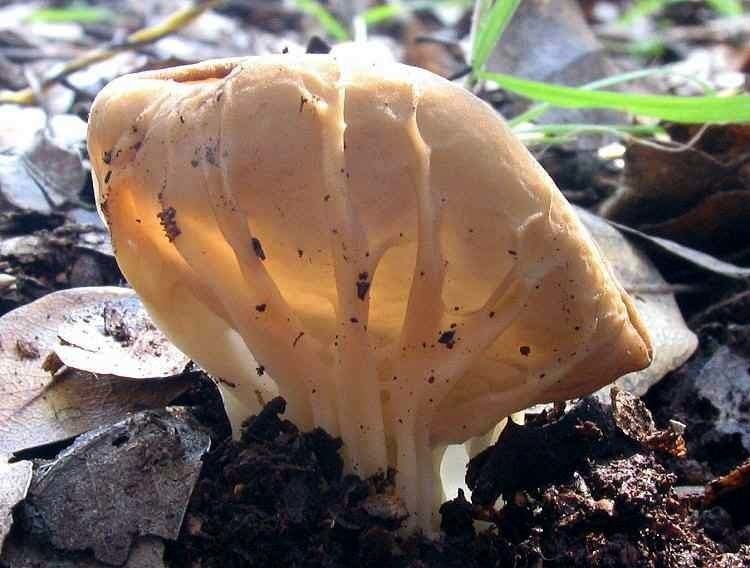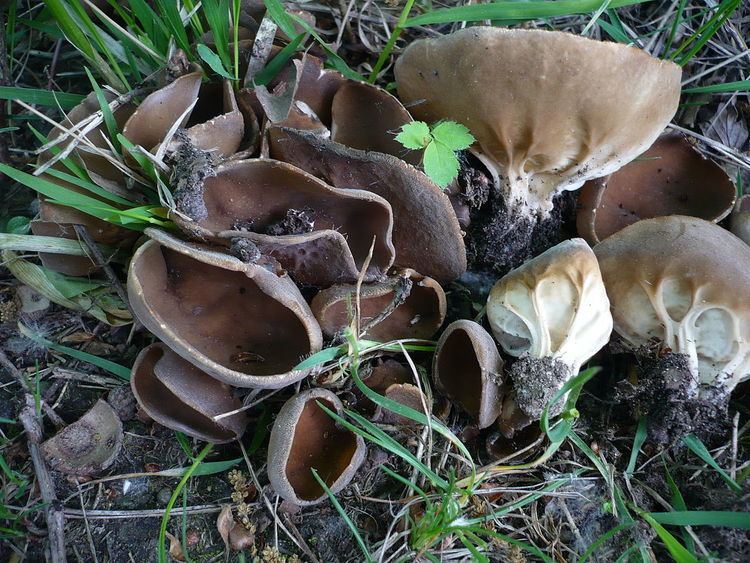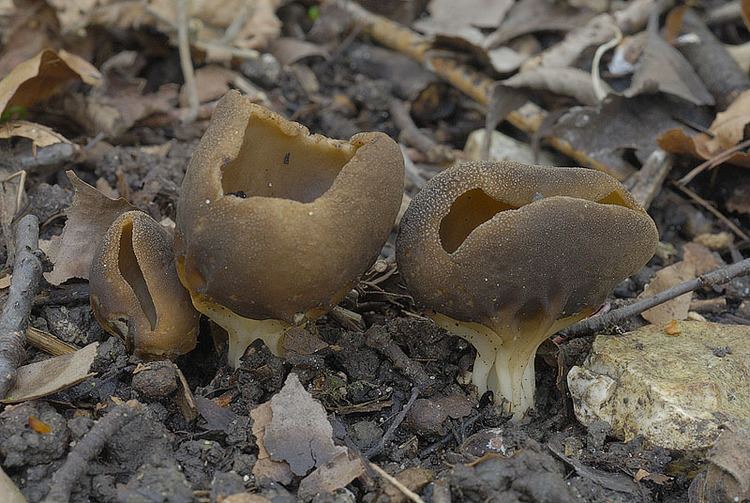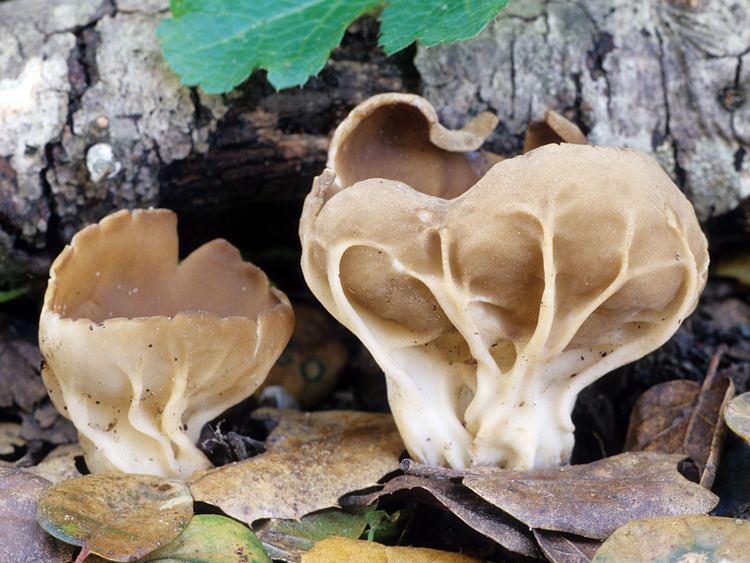Kingdom Fungi Rank Species | Genus Helvella Higher classification Helvella | |
 | ||
Similar Helvella, Helvella leucomelaena, Helvella elastica, Helvella macropus, Helvella lacunosa | ||
Bord s serleggomba helvella acetabulum cabbage leaf helvella
Helvella acetabulum is a species of fungus in the family Helvellaceae, order Pezizales. This relatively large cup-shaped fungus is characterized by a tan fruit body with prominent branching ribs resembling a cabbage leaf; for this reason it is commonly known as the cabbage leaf Helvella. Other colloquial names include the vinegar cup and the brown ribbed elfin cup. The fruit bodies reaches dimensions of 8 cm (3.1 in) by 4 cm (1.6 in) tall. It is found in Asia, Europe, and North America, where it grows in sandy soils, under both coniferous and deciduous trees. Although it may be considered edible, the fungus is not recommended for consumption unless cooked thoroughly, as it contains the toxin gyromitrin.
Contents
- Bord s serleggomba helvella acetabulum cabbage leaf helvella
- Taxonomy
- Description
- Similar species
- Distribution and habitat
- References

Taxonomy

The fungus was first named as Peziza acetabulum by Carl Linnaeus in his 1753 Species Plantarum. It was given its current name by French mycologist Lucien Quélet in 1874. Other genera to which the species has been transferred include Macroscyphus by Samuel Frederick Gray in 1821, Octospora by Joachim Christian Timm in 1788, and Paxina by Otto Kuntze in 1891; the binomials resulting from these transfers are synonyms. Additional synonyms include Acetabula sulcata (Pers.) Fuckel, Acetabula vulgaris Fuckel, Paxina sulcata (Pers.) Kuntze, and Peziza sulcata Pers.

The specific epithet acetabulum means "little vinegar cup", and was the Latin word for a small vessel used for storing vinegar (see acetabulum). Common names include the "cabbage leaf Helvella", the "vinegar cup", the "ribbed-stalk cup", and the "brown ribbed elfin cup".
Description

Helvella acetabulum has a deeply cup-shaped fruit body (technically an apothecium) that is up to 8 cm (3.1 in) in diameter, and 4 cm (1.6 in) deep. The inner spore-bearing surface, the hymenium, is brown, and may be smooth or slightly wavy; the exterior surface is cream-colored, and is covered with minute "hairs". The ribs start from the cream-colored stem and extend almost to the edge of the fruit body. The stem is typically 1 to 6 cm (0.4 to 2.4 in) tall by 1 to 3 cm (0.4 to 1.2 in) thick. The odor and taste of this mushroom are not distinctive.

The spores are smooth, elliptical, translucent (hyaline), and contain a single central oil droplet; they have dimensions of 18–20 by 12–14 µm. The spore-bearing cells, the asci, are 350–400 by 15–20 µm, are operculate—meaning they have an apical "lid" that releases the spores. The tips of the asci are inamyloid, so they do not adsorb iodine when stained with Melzer's reagent. The paraphyses are club-shaped, and have a pale brown color, with tips that are up to 10 µm thick.

Although the edibility of the fruit bodies is often listed as "unknown", consumption of this fungus is not recommended as similar species in the family Helvellaceae contain the toxin gyromitrin. Gyromitrin is heat sensitive, and is broken down by cooking.
Similar species
Helvella queletii has a roughly similar form and appearance, but the ribbing in that species does not extend up the margin as does H. acetabulum. H. griseoalba has ribs that extend halfway up the sides of the fruit body, but the color of the cup is pale to dark gray rather than cream. The fruit bodies also resemble those of H. costifera, but the latter species is distinguished by its grayish to grayish-brown hymenium; like H. acetabulum, it has ribs that extend to most of the outside of the fruit body. There are sometimes intermediate forms between the two species, making them difficult to distinguish. H. robusta is also similar to H. acetabulum, but has a lighter-colored hymenium, a robust stem, and the margin of the fruit body is often bent over the stem at maturity. In contrast, H. acetabulum never has the edge of the fruit body bent over the stem, and the stem is "indistinct or prominent, but never robust".
Distribution and habitat
This fungus is widespread in North America and Europe. In North America, the distribution extends north to Alberta, Canada. In Mexico, it has been collected from State of Mexico, Guanajuato, Guerrero, and Tlaxcala. It is also found in Israel, Jordan, Turkey, Iran China (Xinjiang) and Japan.
The fruit bodies grows solitary, scattered, or clustered together on soil in both coniferous and deciduous woods, typically in spring and summer. A preference for growing in association with coast live oak (Quercus agrifolia) has been noted for Californian populations.
